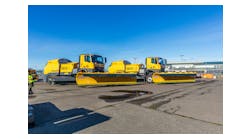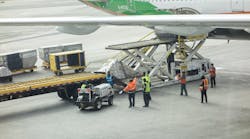FOD is something all operators on an airport worry about. Runway debris left behind can strike an aircraft or get sucked into an engine, causing a lot of expensive damage and sometimes worse.
FOD has been a causal factor in any number of accidents and incidents; probably, the most famous one that comes to mind is the fatal crash of the Concorde on take-off from Paris. A piece of debris that had fallen from another aircraft pierced one of the Concorde’s tires, in turn sending a piece of the tire up into the wing, eventually resulting in a fuel tank rupture and fire that ultimately caused the plane to crash, killing all 109 persons on board and four people on the ground.
This latest incident occurred at London Heathrow Airport and and involved a baggage handler who apparently rested his luggage scanner gun on an engine cowling and then forgot it there. On take-off, the scanner was sucked into the engine causing a reported 4 million pounds of damage - about $6 million. Clearly, the result could have been much worse if the captain had not been able to successfully abort.
This incident should serve as another reminder of the importance of keeping track of all our tools and equipment on the ramp.




